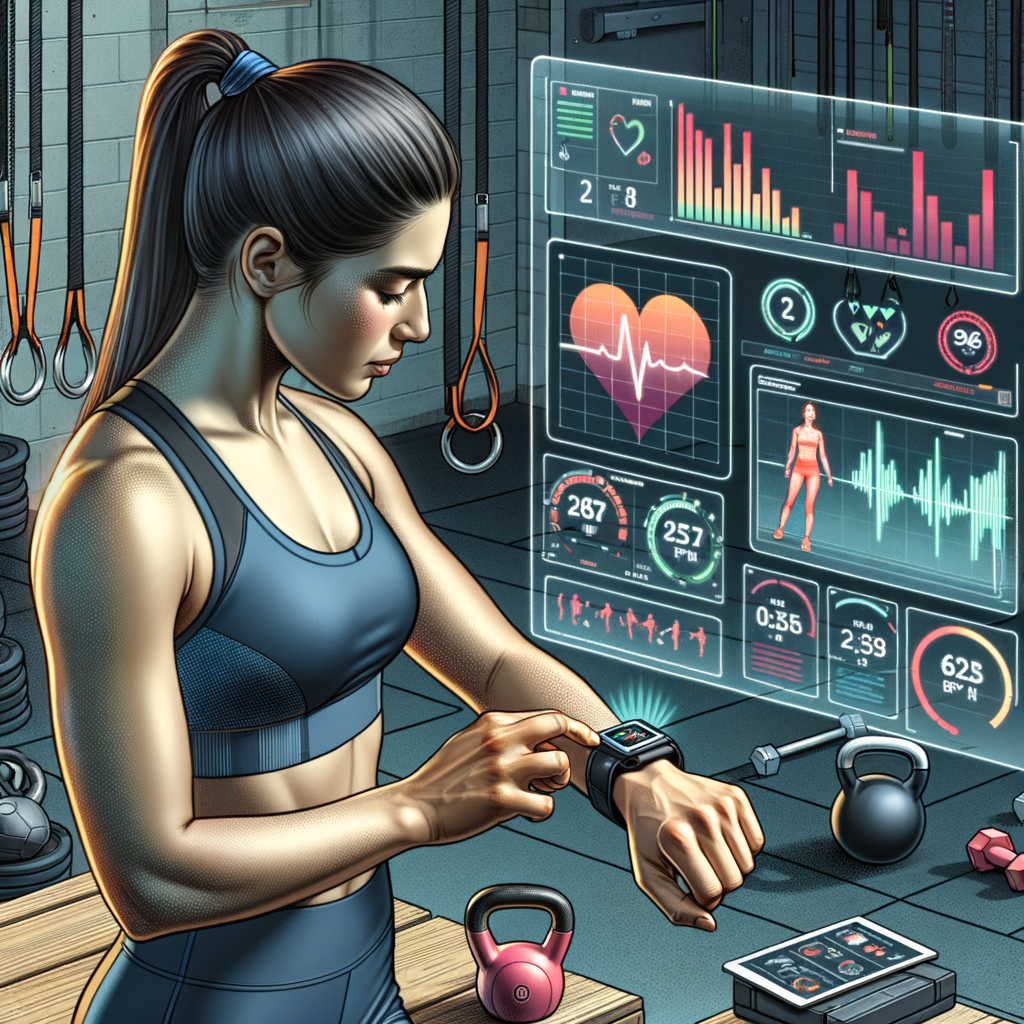-
Table of Contents
“Maximize Your Potential: Harness Heart Rate Monitors and Training Tools for Peak Performance.”
Heart rate monitors and various training tools have become essential components for athletes and fitness enthusiasts seeking to optimize their performance. By providing real-time data on heart rate, intensity levels, and overall exertion, these devices enable users to tailor their training regimens to meet specific goals. Understanding how to effectively utilize these tools can lead to improved endurance, enhanced recovery, and better overall fitness outcomes. This introduction explores the significance of heart rate monitoring and other training technologies in maximizing athletic performance and achieving personal fitness objectives.
Heart Rate Monitor Basics: Understanding Your Training Zones
When it comes to optimizing your performance, understanding the basics of heart rate monitors and how they relate to your training zones is essential. Heart rate monitors are invaluable tools that provide real-time feedback on your heart rate, allowing you to gauge the intensity of your workouts. By knowing your heart rate, you can tailor your training to meet specific goals, whether that’s improving endurance, building strength, or burning fat.
To get started, it’s important to understand the concept of training zones. These zones are typically categorized based on a percentage of your maximum heart rate, which is generally estimated by subtracting your age from 220. For example, if you’re 30 years old, your estimated maximum heart rate would be around 190 beats per minute (bpm). From there, you can determine your training zones, which usually include five distinct levels: resting, moderate, aerobic, anaerobic, and maximum effort.
The resting zone is where your heart rate is at its lowest, typically when you’re sitting or lying down. This zone is crucial for recovery and should not be overlooked. As you move into the moderate zone, your heart rate increases, and this is where you can engage in activities like brisk walking or light jogging. Training in this zone helps build a solid aerobic base, which is essential for endurance sports.
Next, we have the aerobic zone, where your heart rate reaches about 70-80% of your maximum. This is where you start to feel the burn, but it’s also where you can sustain your effort for longer periods. Training in this zone improves cardiovascular fitness and increases your body’s ability to utilize oxygen efficiently. It’s ideal for longer runs or cycling sessions, as it helps build endurance without overexerting yourself.
As you push into the anaerobic zone, your heart rate climbs to about 80-90% of your maximum. This is where things get intense. In this zone, your body starts to rely more on glycogen for energy rather than oxygen, which means you can only sustain this level of effort for shorter bursts. Interval training is a great way to incorporate this zone into your routine, as it allows you to alternate between high-intensity efforts and recovery periods.
Finally, the maximum effort zone is where you give it your all, reaching 90-100% of your maximum heart rate. This zone is typically reserved for short, all-out efforts, like sprints or high-intensity interval training (HIIT). While it can be incredibly effective for building speed and power, it’s also the most taxing on your body, so it’s important to use it sparingly and allow for adequate recovery.
By using a heart rate monitor, you can easily track which zone you’re in during your workouts. This real-time feedback allows you to adjust your intensity on the fly, ensuring that you’re training effectively and efficiently. Moreover, understanding your training zones can help prevent overtraining and reduce the risk of injury, as you’ll be more aware of when to push hard and when to back off.
In conclusion, heart rate monitors are more than just gadgets; they are essential tools for anyone looking to optimize their performance. By understanding your training zones and how to use your heart rate monitor effectively, you can create a more structured and purposeful training plan that aligns with your fitness goals. So, strap on that monitor, pay attention to your heart rate, and watch as you elevate your training to new heights.
The Role of Wearable Technology in Performance Tracking

In recent years, wearable technology has revolutionized the way athletes and fitness enthusiasts track their performance. Heart rate monitors, smartwatches, and fitness trackers have become essential tools for anyone looking to optimize their training regimen. These devices not only provide real-time data but also help users understand their bodies better, allowing for more informed decisions about their workouts. As a result, the role of wearable technology in performance tracking has grown significantly, making it easier than ever to achieve fitness goals.
One of the most significant advantages of heart rate monitors is their ability to provide immediate feedback during exercise. By continuously measuring heart rate, these devices allow users to gauge their intensity levels and adjust their efforts accordingly. For instance, if an athlete notices their heart rate is too high, they can dial back their pace to avoid overexertion. Conversely, if their heart rate is lower than expected, they might push themselves a little harder to reach their target zone. This real-time feedback is invaluable for optimizing performance, as it helps individuals stay within their desired training zones, whether they are aiming for fat burning, endurance, or peak performance.
Moreover, heart rate monitors can track trends over time, providing insights into an athlete’s progress. By analyzing data collected during various workouts, users can identify patterns in their heart rate responses to different types of training. For example, if an athlete consistently sees a lower heart rate at a given pace over several weeks, it indicates improved cardiovascular fitness. This kind of information is crucial for setting realistic goals and adjusting training plans to ensure continued progress. Additionally, many devices sync with mobile apps, allowing users to visualize their data and share it with coaches or training partners for further analysis.
In addition to heart rate monitors, other wearable technologies, such as GPS trackers and smartwatches, play a vital role in performance tracking. GPS devices provide accurate distance measurements, which are essential for runners and cyclists looking to improve their speed and endurance. By tracking pace and distance, athletes can create more structured training plans that focus on specific goals, such as increasing mileage or improving race times. Furthermore, many smartwatches come equipped with features that monitor sleep patterns and recovery, offering a holistic view of an athlete’s overall health and performance.
Transitioning from data collection to actionable insights is where the true power of wearable technology lies. With the wealth of information these devices provide, athletes can make informed decisions about their training. For instance, if a user notices a consistent drop in performance metrics, it may signal the need for a recovery period or a change in training intensity. This ability to listen to one’s body through data is a game-changer, as it encourages a more personalized approach to fitness.
Ultimately, the integration of wearable technology into training routines has made performance tracking more accessible and effective. As athletes become more aware of their physiological responses, they can tailor their workouts to maximize results. Whether it’s through heart rate monitoring, GPS tracking, or sleep analysis, these tools empower individuals to take control of their fitness journeys. As technology continues to evolve, the potential for optimizing performance will only expand, making it an exciting time for anyone passionate about improving their athletic abilities.
Integrating Heart Rate Data with Other Fitness Metrics for Enhanced Results
When it comes to optimizing performance in any fitness regimen, heart rate monitors have become essential tools for athletes and fitness enthusiasts alike. However, the true power of these devices emerges when we integrate heart rate data with other fitness metrics. By doing so, we can gain a more comprehensive understanding of our bodies and tailor our training to achieve enhanced results.
To start, heart rate monitors provide real-time feedback on how hard your body is working during exercise. This data is invaluable, as it allows you to stay within specific training zones, whether you’re aiming for fat burning, endurance, or peak performance. But heart rate alone doesn’t tell the whole story. For instance, combining heart rate data with metrics like pace, distance, and even power output can paint a clearer picture of your overall performance. If you’re running, knowing your pace alongside your heart rate can help you determine if you’re pushing too hard or if you can afford to increase your speed.
Moreover, integrating heart rate variability (HRV) into your training can provide insights into your recovery and overall readiness to train. HRV measures the variation in time between heartbeats and can indicate how well your body is coping with stress, both physical and mental. By tracking HRV alongside your heart rate during workouts, you can better understand when to push yourself and when to take a step back. For example, if your heart rate is elevated but your HRV is low, it might be a sign that your body needs more recovery time before tackling another intense session.
In addition to these metrics, incorporating data from wearable devices that track movement patterns, such as accelerometers or GPS, can further enhance your training. These tools can provide insights into your stride length, cadence, and even the efficiency of your movements. When you combine this information with your heart rate data, you can identify areas for improvement. For instance, if you notice that your heart rate spikes significantly during certain intervals, but your pace remains steady, it might indicate that your form is off or that you’re not utilizing your energy efficiently.
Nutrition also plays a crucial role in performance optimization, and tracking your caloric intake alongside your heart rate and activity levels can help you fine-tune your diet for better results. By understanding how your body responds to different foods during workouts, you can make informed choices that support your training goals. For example, if you notice that your heart rate remains elevated longer after consuming certain meals, it might be worth adjusting your pre-workout nutrition to enhance your performance.
Finally, don’t forget the importance of setting specific goals based on the data you collect. Whether you’re training for a marathon or simply looking to improve your overall fitness, having clear objectives can help you stay motivated and focused. By regularly reviewing your heart rate data alongside other metrics, you can track your progress and make necessary adjustments to your training plan.
In conclusion, integrating heart rate data with other fitness metrics creates a holistic approach to training that can lead to enhanced performance. By understanding how these various elements interact, you can make informed decisions that not only improve your workouts but also contribute to your overall health and well-being. So, whether you’re a seasoned athlete or just starting your fitness journey, leveraging these tools can help you reach new heights in your performance.
Q&A
1. **Question:** How can heart rate monitors help in optimizing training performance?
**Answer:** Heart rate monitors provide real-time data on an athlete’s heart rate, allowing them to train within specific intensity zones, improve cardiovascular fitness, and avoid overtraining.
2. **Question:** What are the benefits of using GPS devices in conjunction with heart rate monitors?
**Answer:** GPS devices track distance, speed, and elevation, enabling athletes to analyze their performance metrics alongside heart rate data, which helps in planning and adjusting training sessions for better results.
3. **Question:** How can training apps enhance the use of heart rate monitors?
**Answer:** Training apps can integrate heart rate data with workout plans, provide feedback on performance trends, and offer personalized training recommendations, making it easier for athletes to optimize their training regimens.Using heart rate monitors and other training tools can significantly enhance athletic performance by providing real-time data that helps athletes tailor their workouts to their specific physiological responses. These tools enable users to track their intensity levels, recovery times, and overall cardiovascular health, allowing for more informed training decisions. By analyzing this data, athletes can optimize their training regimens, prevent overtraining, and improve endurance and efficiency. Ultimately, the integration of heart rate monitors and training tools leads to a more personalized and effective approach to performance enhancement, fostering better results and achieving fitness goals.



